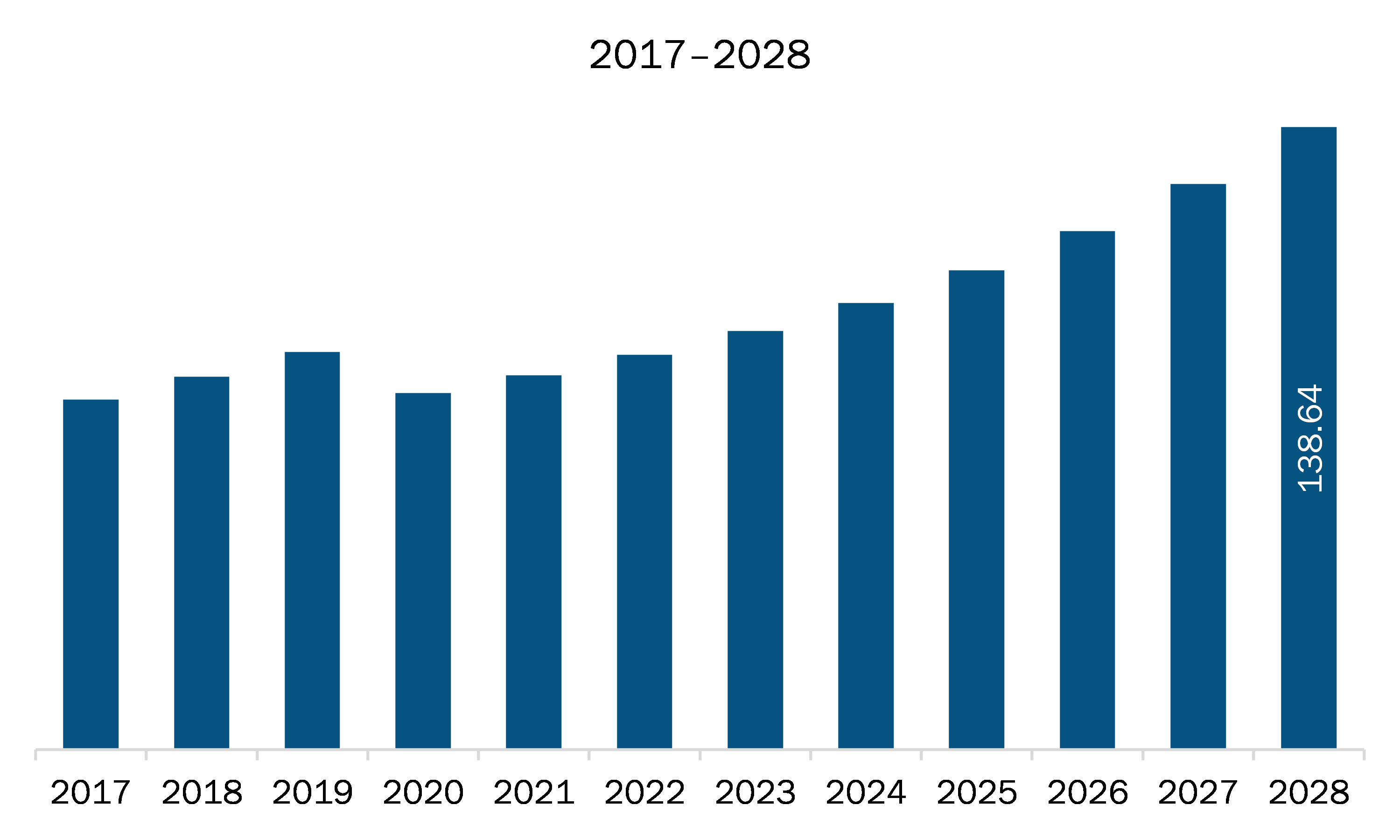The machine vision lighting market in MEA is expected to grow from US$ 83.36 million in 2021 to US$ 138.64 million by 2028; it is estimated to grow at a CAGR of 7.5% from 2021 to 2028.
Saudi Arabia, South Africa, and UAE are major economies in MEA. Growing popularity of IIoT and rising adoption of machine vision systems by SMEs is the major factor driving the growth of the MEA machine vision lighting market. As IIoT gains traction, machine vision should see a dramatic boost. IIoT links production technology with information technology, therefore it involves extensive data capture and analytics to continually optimize the operation of factories. Machine vision is one of the most important basic technologies to supply IIoT with information. Manufacturing’s rapid adaption of IIoT has led to a renaissance in robotics and the renewed need for machine vision. IIoT has upped the ante on how humans and robots will collaborate together, but none of this can occur without the expanded use of vision technologies connecting devices, robots, and humans. With the increasing adoption of IIoT coupled with decreasing prices of machine vision systems, SMEs are anticipated to invest more in automation.
Major countries facing the economic consequences of the COVID-19 pandemic in MEA are Saudi Arabia, the UAE, Egypt, Morocco, and Kuwait. With the outbreak in the countries mentioned above, it is becoming clear that a few can escape its impact, presenting major challenges for all sectors. The manufacturing industry across the MEAwas severely impacted due to the pandemic in the starting of 2020. However, to combat the huge economic impact, countries such as the UAE have taken necessary steps to continue economic activities across the region. The UAE government are promoting the adoption of advanced technologies across the industries to increase efficiency. Thus, the increasing initiatives across the region to lower the impact of the COVID-19 pandemic in the manufacturing industry would ensure medium to low impact on the machine vision lighting market over the years.
With the new features and technologies, vendors can attract new customers and expand their footprints in emerging markets. This factor is likely to drive the MEA machine vision lighting market. The MEA machine vision lighting market is expected to grow at a good CAGR during the forecast period.

- This FREE sample will include data analysis, ranging from market trends to estimates and forecasts.
MEA Machine Vision Lighting Market Segmentation
MEA Machine Vision Lighting Market – By Lighting Type
- LEDs
- Fiber Optic Lights (Halogen)
- Florescent Lighting
- Xenon
- Others
MEA Machine Vision Lighting Market – By Spectrum of Light
- Visible spectrum
- UV Spectrum
- IR spectrum
MEA Machine Vision Lighting Market – By Application
- Automotive
- Consumer Electronics
- Food & Beverage
- Pharmaceuticals
- Logistics
- Others
MEA Machine Vision Lighting Market, by Country
- Saudi Arabia
- South Africa
- UAE
- Rest of MEA
MEA Machine Vision Lighting Market - Companies Mentioned
- Advanced Illumination Inc
- EFFILUX
- Moritex Corporation
- National Instruments Corporation
- Omron Microscan System, Inc.
- ProPhotonix Limited
- Smart Vision Lights
- Spectrum Illumination
- TPL Vision
Middle East and Africa Machine Vision Lighting Report Scope
| Report Attribute | Details |
|---|---|
| Market size in 2021 | US$ 83.36 Million |
| Market Size by 2028 | US$ 138.64 Million |
| CAGR (2021 - 2028) | 7.5% |
| Historical Data | 2019-2020 |
| Forecast period | 2022-2028 |
| Segments Covered |
By Lighting Type
|
| Regions and Countries Covered |
Middle East and Africa
|
| Market leaders and key company profiles |
|
- Historical Analysis (2 Years), Base Year, Forecast (7 Years) with CAGR
- PEST and SWOT Analysis
- Market Size Value / Volume - Regional, Country
- Industry and Competitive Landscape
- Excel Dataset
Recent Reports
Testimonials
Reason to Buy
- Informed Decision-Making
- Understanding Market Dynamics
- Competitive Analysis
- Identifying Emerging Markets
- Customer Insights
- Market Forecasts
- Risk Mitigation
- Boosting Operational Efficiency
- Strategic Planning
- Investment Justification
- Tracking Industry Innovations
- Aligning with Regulatory Trends






















 Get Free Sample For
Get Free Sample For